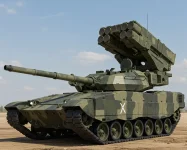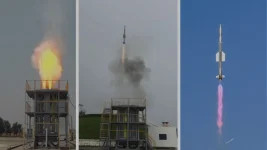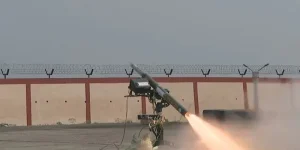- Views: 729
- Replies: 7

The Defence Research and Development Organisation (DRDO) recently celebrated a major milestone with the successful flight tests of the Very Short-Range Air Defence System (VSHORADS) missile.
This state-of-the-art system strengthens India's air defence capabilities and showcases the country's growing prowess in indigenous defence technology.
Key Features and Advancements
The VSHORADS is categorized as a Man-Portable Air Defence System (MANPAD), known for its lightweight design and ease of deployment by ground troops.Crucially, it's designed to neutralize low-altitude aerial threats like drones, helicopters, and low-flying aircraft.
Here's a breakdown of some of the key technological advancements seen in the VSHORADS:
- Miniaturized Reaction Control System (RCS): This system allows for incredibly precise maneuvering, ensuring the missile can intercept even highly agile targets.
- Integrated Avionics: The missile's guidance and control systems have been seamlessly integrated, likely reducing size and complexity.
- Dual Thrust Solid Motor: This provides the missile with the necessary speed and power to engage targets effectively, even at short ranges.
- Optimized for Portability: The priority placed on lightweight and ergonomic design enables rapid deployment in critical situations.
Defence Implications and Self-Reliance
The VSHORADS, with its focus on portability and low-altitude interception, is a valuable asset for India's armed forces, fulfilling several important roles:- Forward Area Defence: The system provides vital protection to troops in frontline areas, where the threat of drones and low-flying aircraft is particularly high.
- Rapid Response: The MANPAD design allows soldiers to quickly deploy and engage threats, even in challenging terrain.
- Strategic Asset Protection: VSHORADS can provide an additional layer of defence for critical infrastructure and high-value military assets.
This successful program demonstrates India's commitment to self-reliance and the ability to produce cutting-edge weapons systems.
Looking Ahead
The recent tests mark an important step in the VSHORADS development, but are far from the final stage.Further trials and iterations can be expected as the system prepares for full induction into India's armed forces.
The knowledge and technologies developed with VSHORADS could ultimately lead to more advanced air defence systems, further solidifying India's place as a major player in defence technology.



